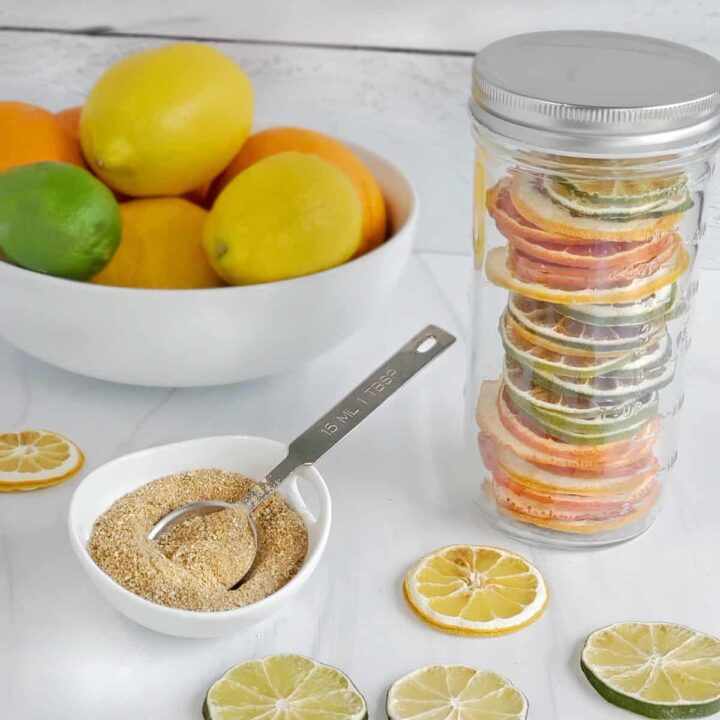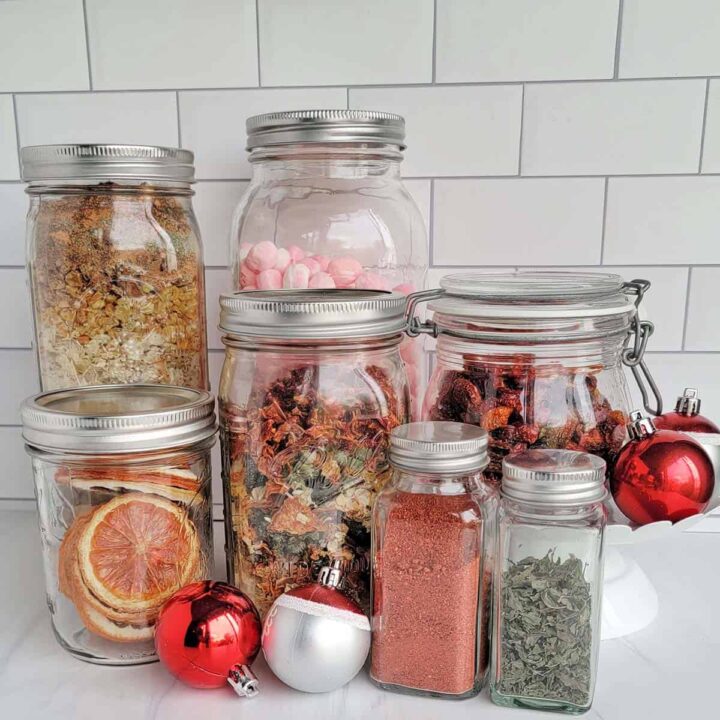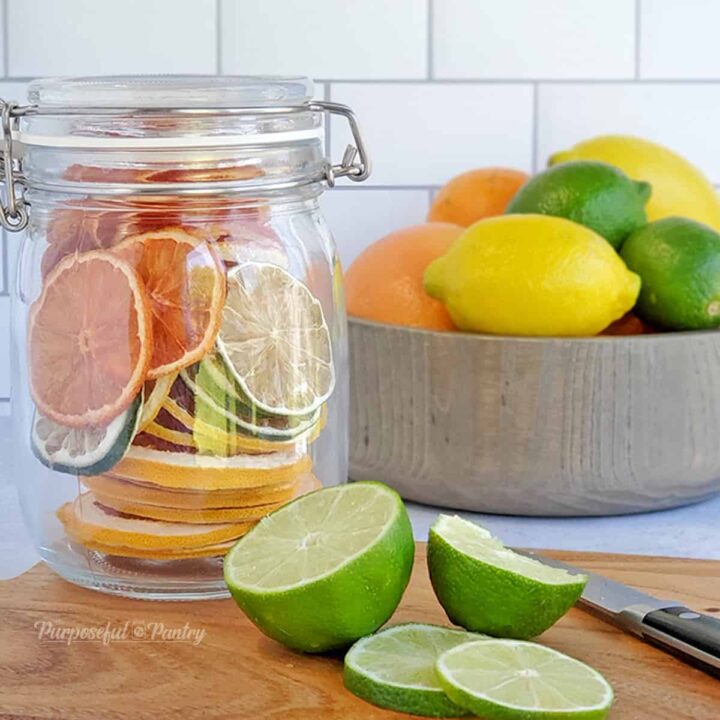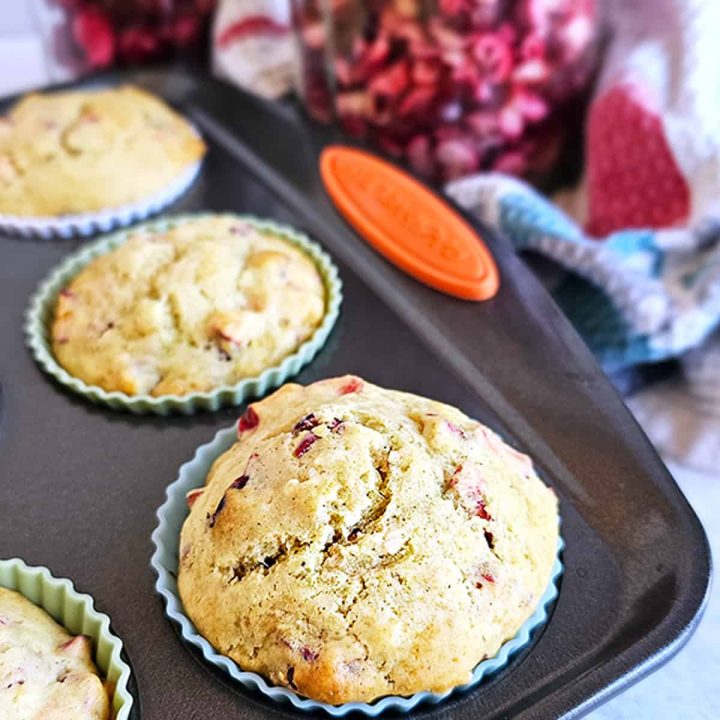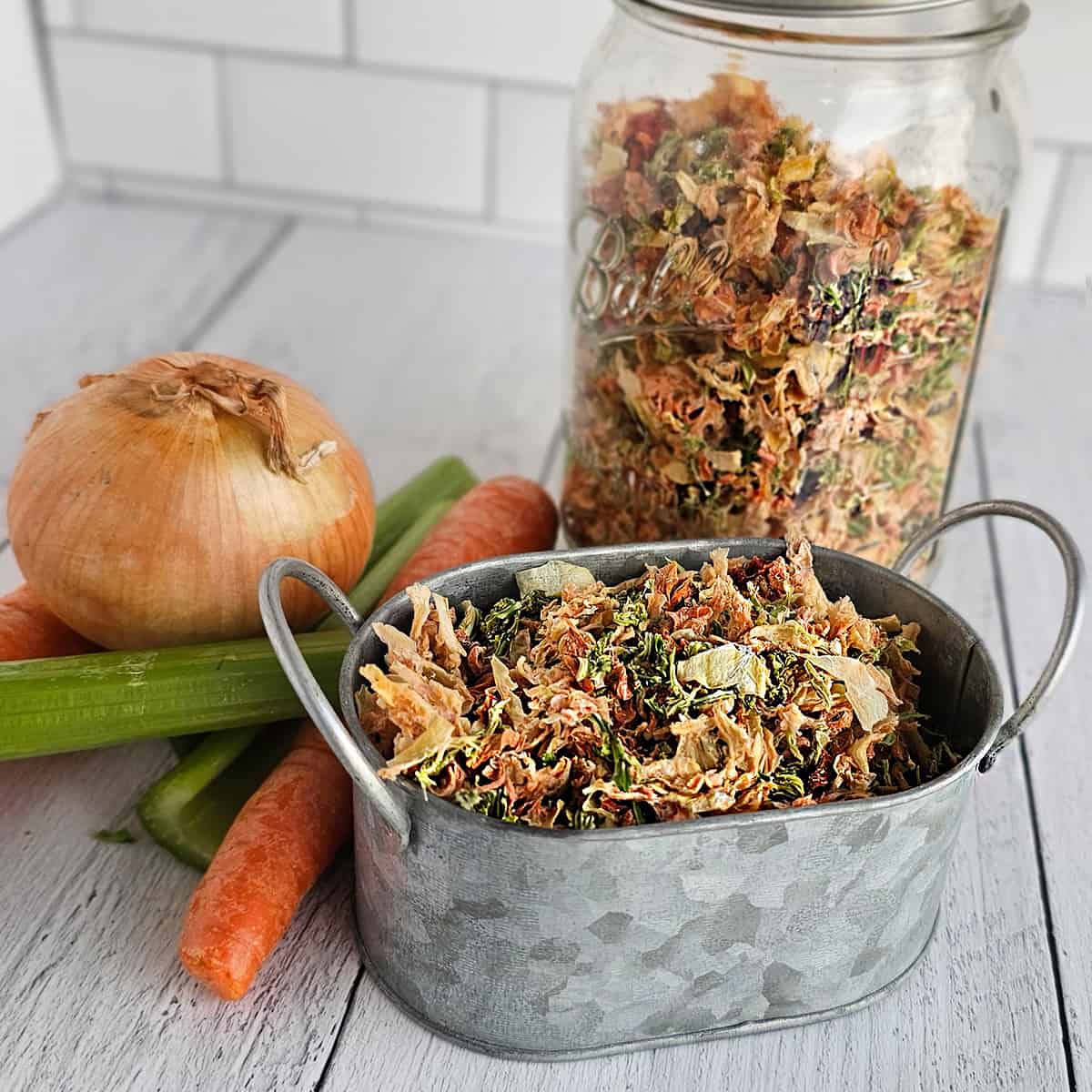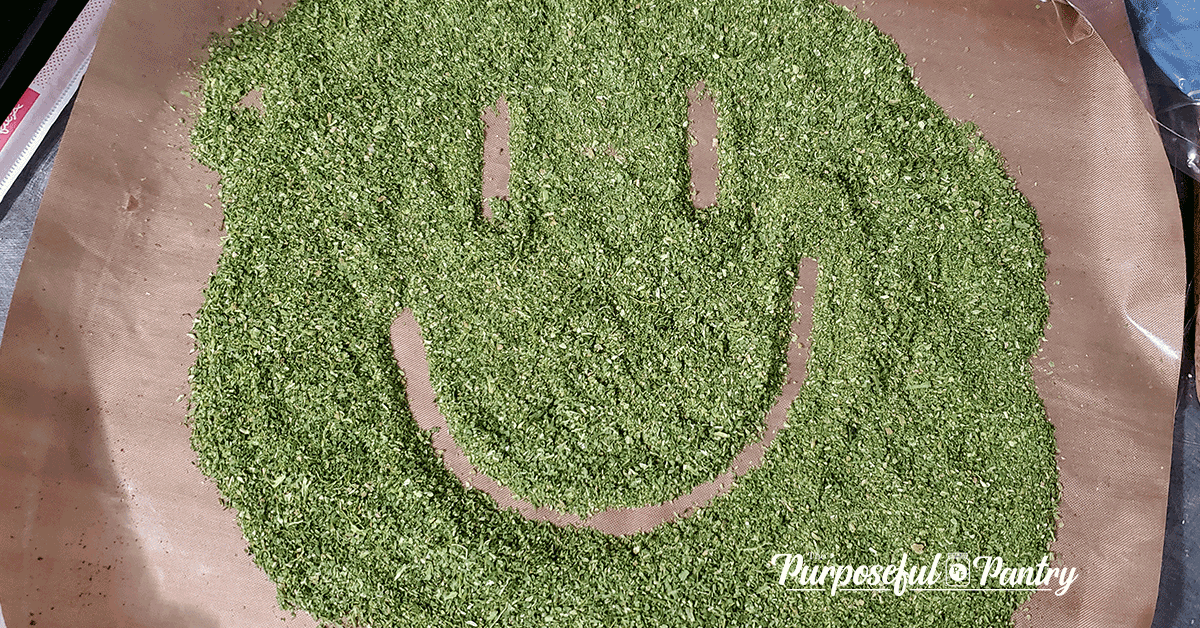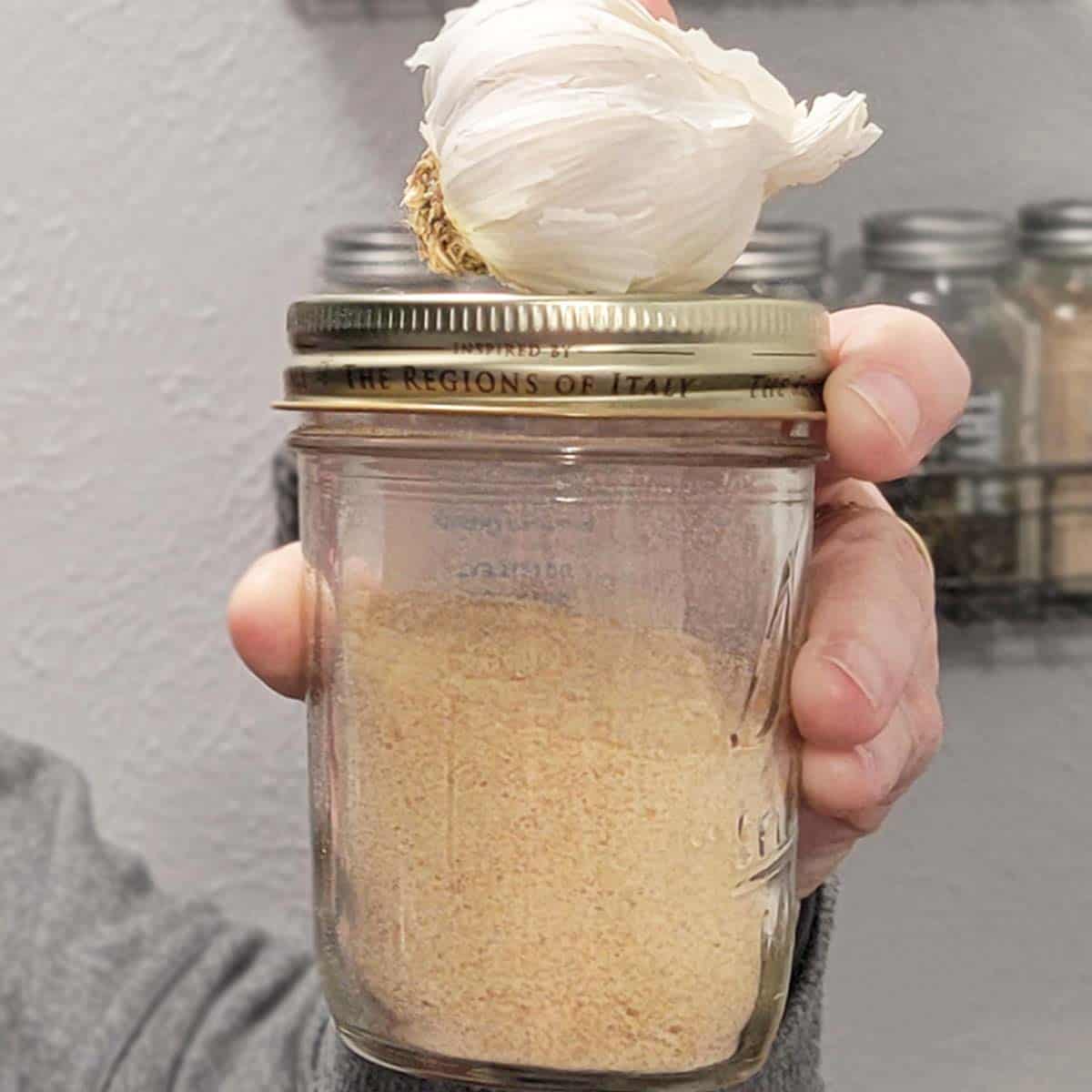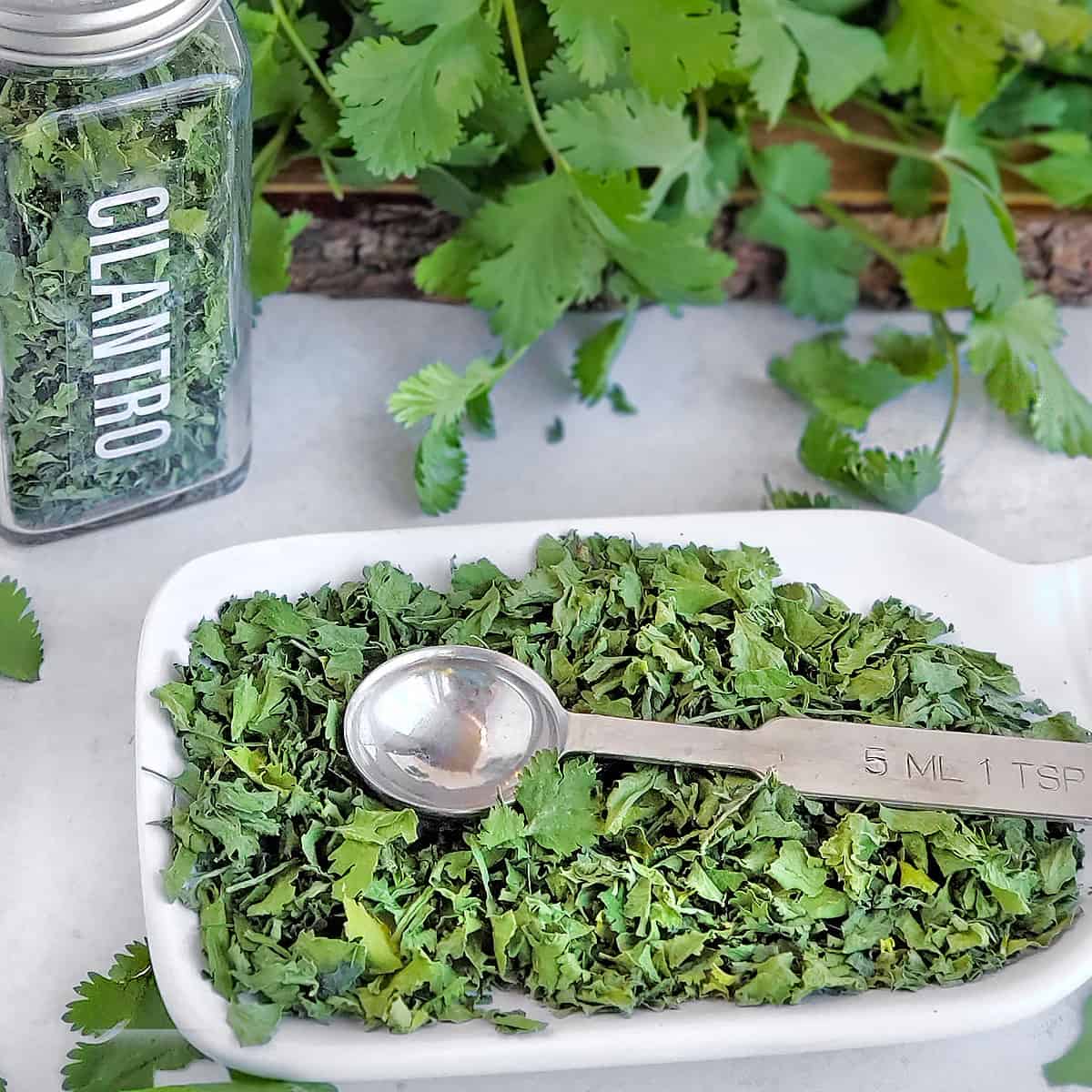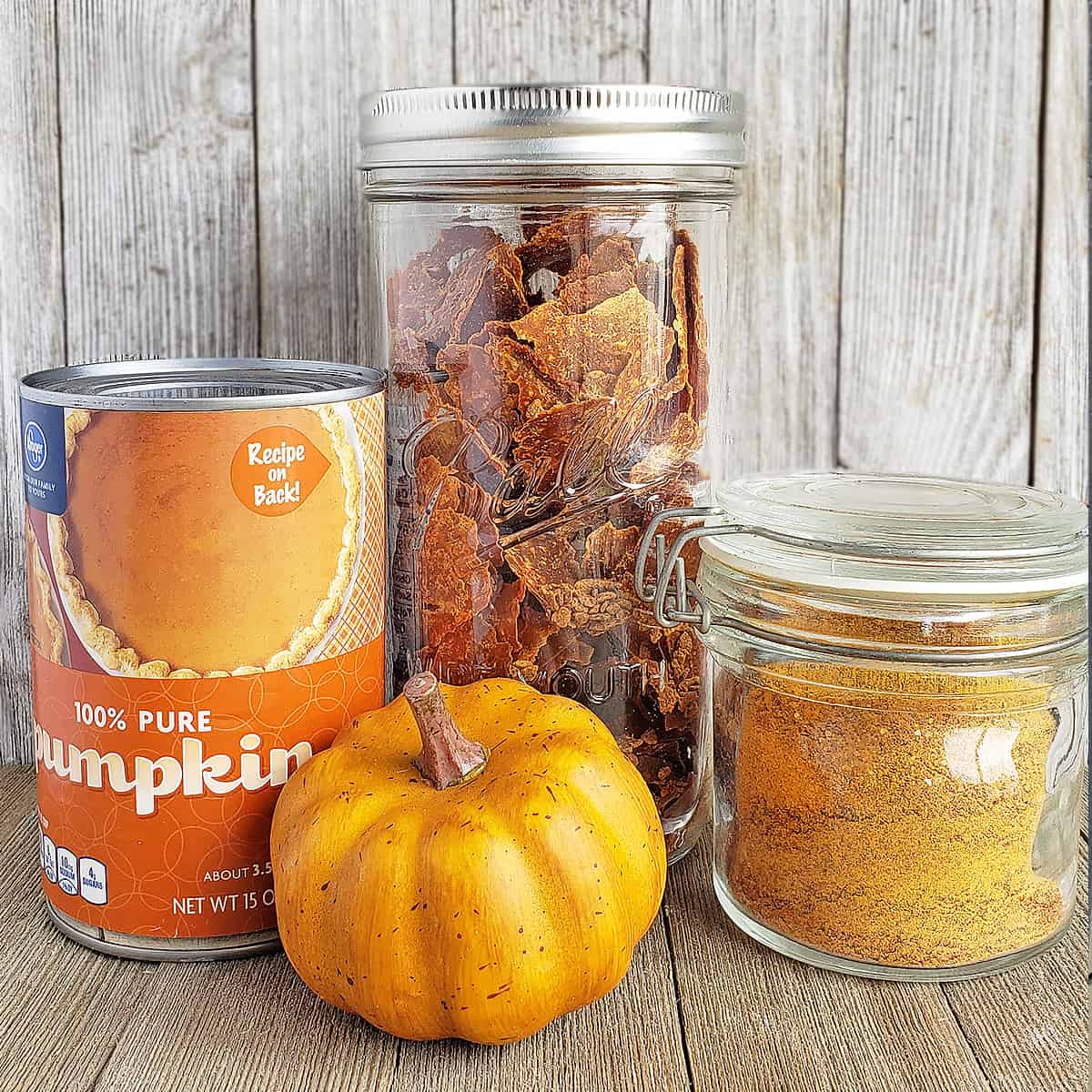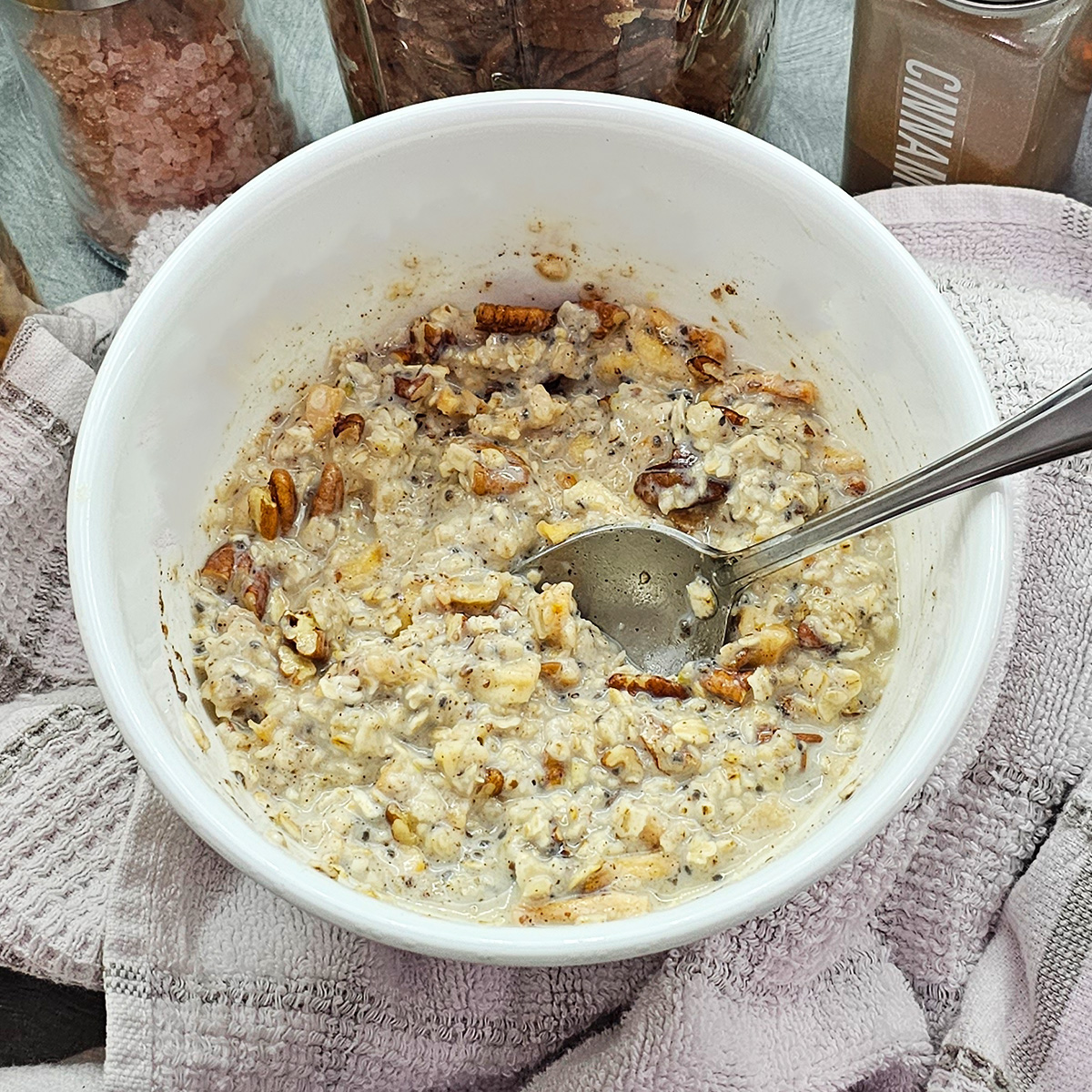How to Dehydrate Oranges
Learn to dehydrate oranges and make them shelf-stable all year long. These bundles of sunshine are perfect for snacking, baking, cooking, and decorating! Then think about dipping it in chocolate! So crazy good!
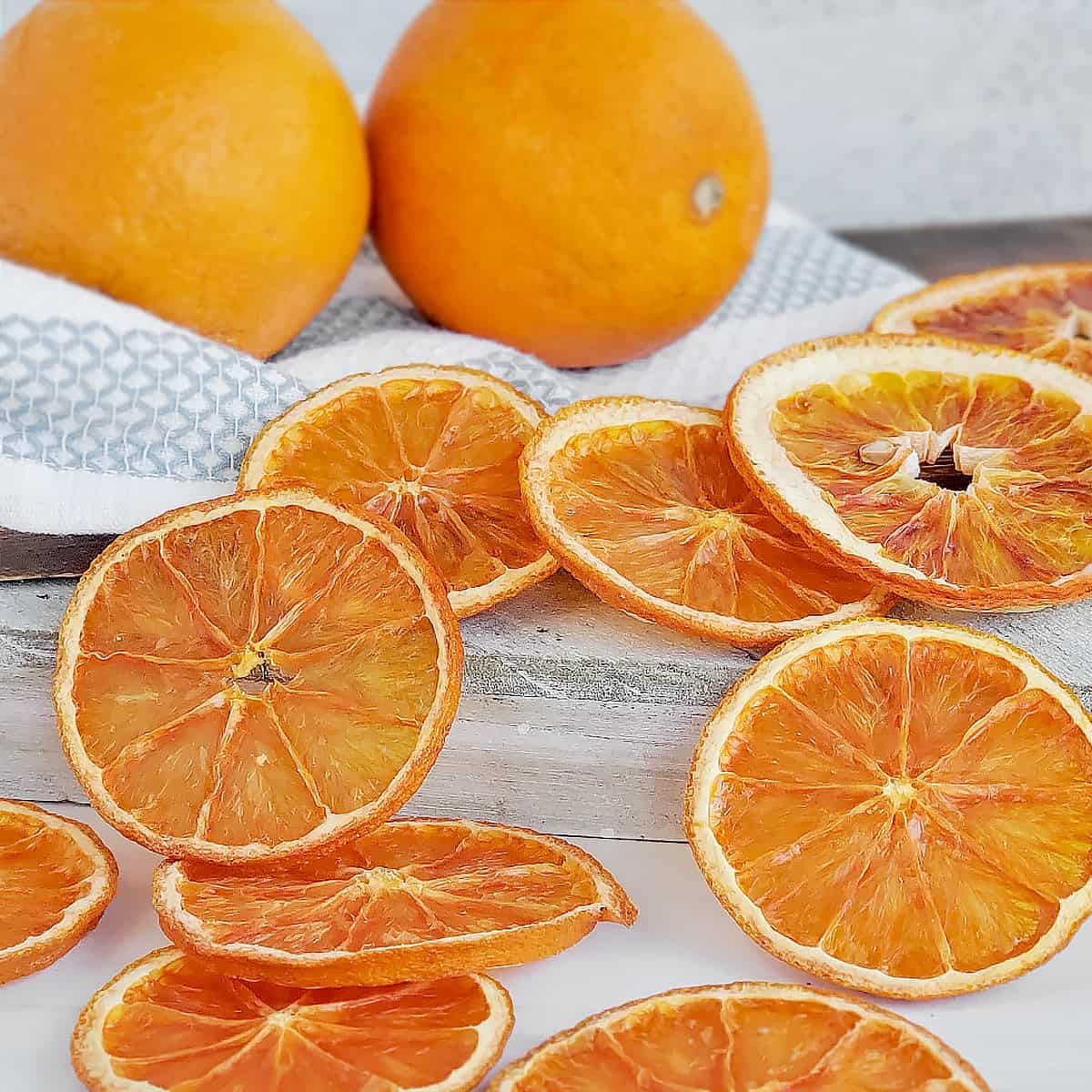
While the citrus season is in the late winter and early spring in North America, good orange varieties are available all year round. You can enjoy a great harvest season or a great sale anytime.
Oranges make an easy first project for dehydrators. A simple slice and dry is all that is needed! And the slices are so sweet that they make perfect snacks! And dip them in a bit of chocolate — marvelous!
Best Oranges to Dry
Any orange is great to dry
- Mandarin oranges
- Cutie oranges
- Cara Cara oranges
- Navel oranges
- Valencia oranges
- Clementine oranges
- Tangelos
- Blood Oranges
- Tangerines
How to Dehydrate Oranges
Quick-drying FAQ: Dry at 125°F/52°C for 18-36+ hours until slices snap when cooled.
Step one
Wash oranges well. Even if using organic, you should soak and wash citrus fruit to remove any residue and wax on the skin.
Soak in a 50/50 solution of water and vinegar for about 15 minutes. Scrub with baking soda if you feel it necessary.
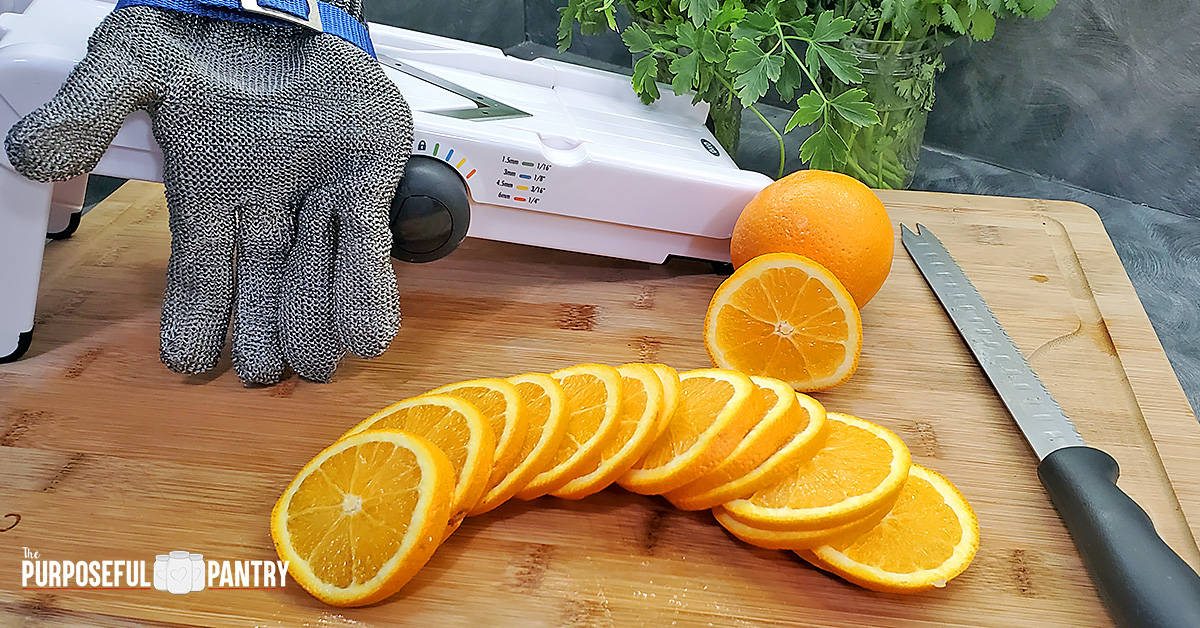
Step Two
Slice oranges into 1/4″ slices (6-7 mm). Using a good serrated bread knife works wonders to cut oranges by hand. But you can also use a meat slicer if you have one.
Tip: If using a mandoline or meat slicer, cut the end of the orange to give yourself a flat surface.
Tip 2: PLEASE remember to wear a protective cutting glove when using a mandoline. Even if you can use the guard that comes with the machine, hands and surfaces become slick.
Step Three: Drying Time
Place slices on trays. You can pack them fairly close together without overlapping. Some airflow is nice, but they don’t need a ton of space, nor will they shrink much.
Dry at 125°F/52°C or lower for 18-36+ hours.
While the recommended temperature for fruit is 135°F/57°C, oranges often brown during the drying phase as the sugars brown from the heat. Dropping the temperature can help prevent that, though you do have to add a little more time to the drying process.
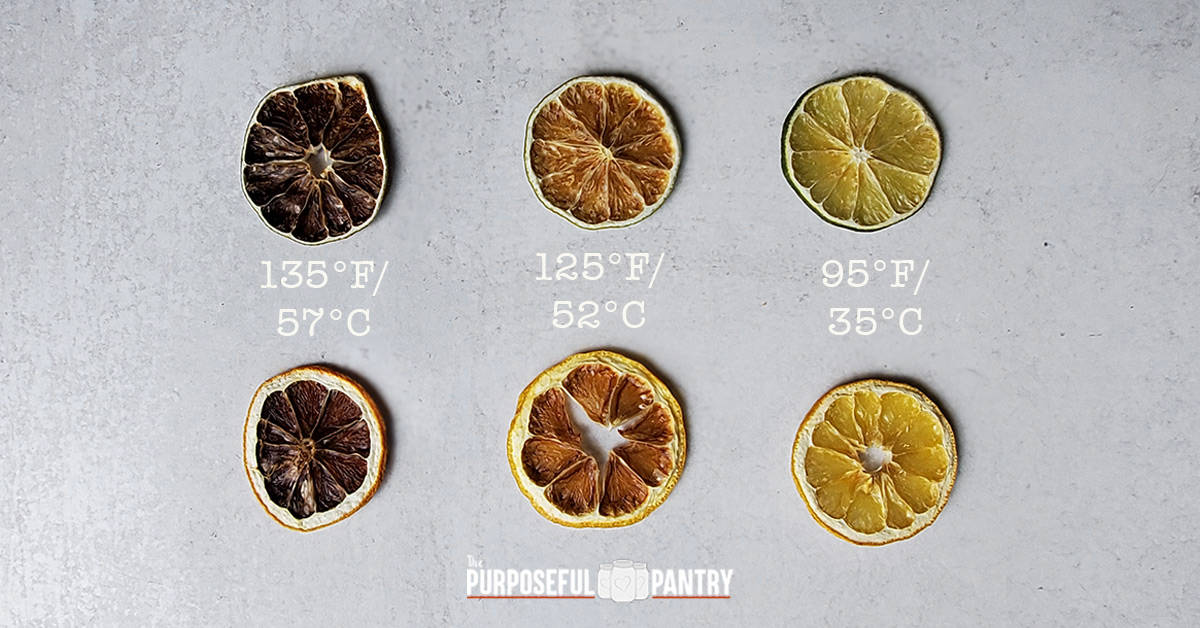
You can use a liner such as silicone mesh or parchment paper, but it’s unnecessary.
Tip: Flip your slices after the three to four-hour mark, and every five hours, to keep them from sticking to your trays.
Nutrition Tip: If you wish to keep all of the Vitamin C available in the oranges, you need to dry at 115°F/46°C, or lower, as the higher the temperature, the more nutrition you lose for Vitamins A & C. This does extend drying time.
Step Four:
Test. Allow a sample or two to come to room temperature. It is fully dry when you can snap it in two easily, and there is no moisture in the cells of the flesh.
Step Five:
Condition. The conditioning process is essential to allow all slices to come to a median humidity and check for any moisture issues. This helps prevent mold in storage. If you haven’t heard about conditioning dehydrated food, you can check out this blog post that teaches how to condition dehydrated food.
Storage:
Store in an airtight container for up to eighteen months, though you’ll likely get a much longer time with proper storage techniques. Shelf life is best if you can store out of direct sunlight in a dark, cool, dry place. I use mason jars, but mylar bags are good, too.
A note about storing dried orange slices (and other citrus wheels). Your citrus may turn darker over time in storage. This is often caused by exposure to direct sunlight, but it does not affect the oranges.
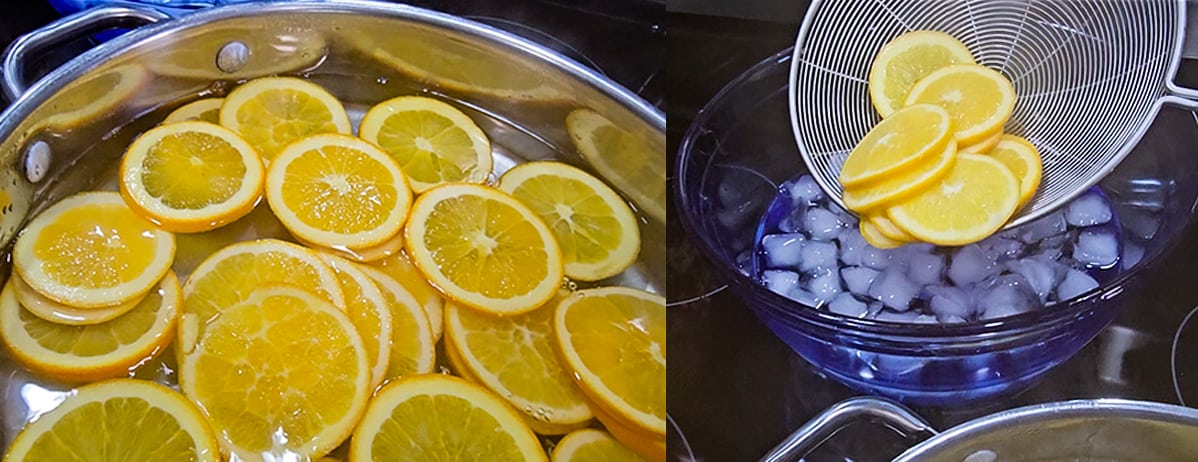
Blanching Oranges
If you’ve had dried oranges before and felt they were just too bitter for you, I found a great solution!
Blanching oranges before dehydrating helps remove some bitterness from the fruit, making your final product taste more like orange and less like the pith. Give it a try the next time you dehydrate oranges!
Steps:
- Slice oranges
- Blanch in boiling water for 2 minutes
- Immediately place into an ice bath to stop the cooking process
- Dehydrate using the above directions
Oven Directions:
- Slice oranges into ¼” slices with a sharp knife.
- Place parchment paper onto a wire cooling rack. Placing this onto a baking sheet can help control moving in and out of the oven.
- Place orange slices in a single layer.
- Turn the oven to the lowest temperature, preferably 170°F/60°C or below. Use a wooden spoon or oven-safe silicone oven pad to prop the door open to lower the temp if necessary.
- Flip oranges after 2-3 hours.
- Dry until completely dry, approximately 3-5 hours.
- Store as above.

How to Use Dried Orange Slices
Your dehydrated orange slices will look so pretty in your containers, but they have so many more uses than simply throwing in a potpourri bowl.
- Dip in chocolate to eat as treats or share as gifts – these should be immediately refrigerated and served within a few days.
- Place in a bowl of sugar for an orange-flavor sugar that can be used in baking or finishing
- Roast chicken: Place slices in the cavity or make a bed for the chicken to sit on.
- Place slices on fish to bake.
- Slip into a glass of water or tea to bring a bright orange flavor.
- As a garnish on cocktails
- Decorating. A pretty orange garland over the mantle or window is a great way to brighten a dreary winter view. (Remember to spray with a protective coating if displaying any citrus on a wreath or other decoration for any period to seal it). It’s lovely on a Christmas tree, as well.
- Simmer in a pot with cinnamon sticks, nutmeg, cardamon, rosemary, or other favorite spices for an autumn/winter ambiance. Here are 15 Simmering Pot Ideas with Dried Foods that feature oranges in a big way!
Darcy’s Tip: when snacking on dried orange slices, if you find it too bitter, you can remove the peel, and eat the fleshy insides.
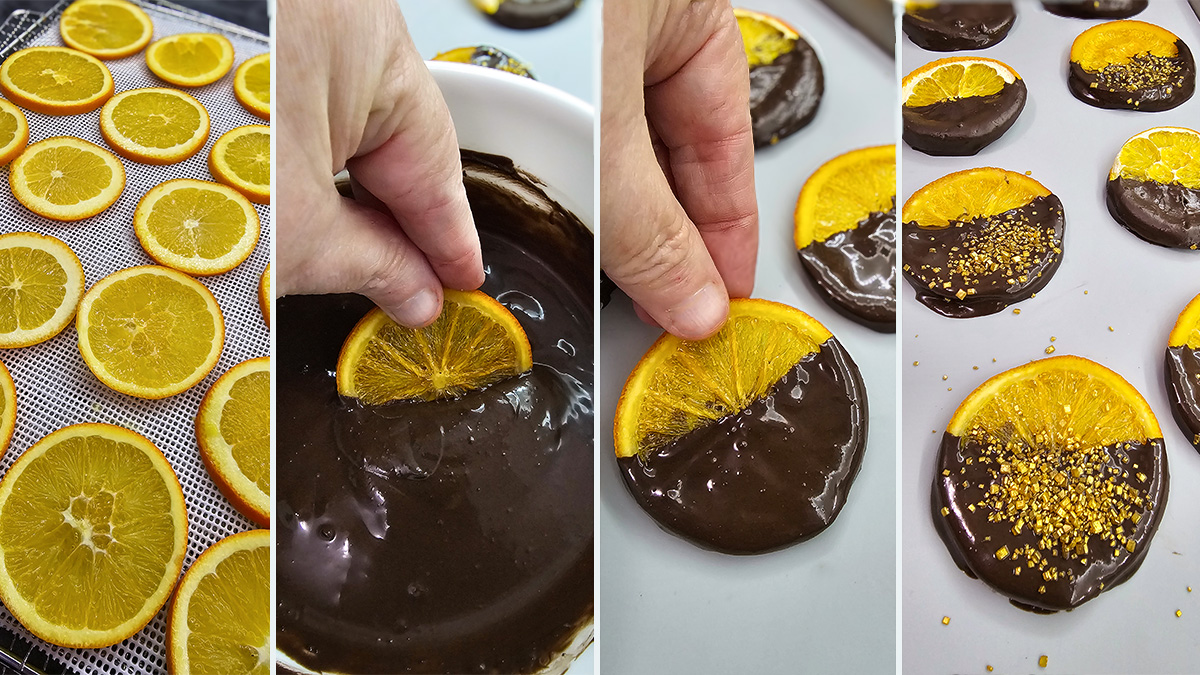
How to Dehydrate Orange Segments
Some folks love to have dehydrated orange segments. I prefer doing canned mandarin oranges because they’ve had all the prep work done. However, if you are using fresh oranges, use smaller sweeter varieties to make this happen like Cara Cara, mandarin, etc.
- Wash and peel oranges
- Segment oranges and pull off the white connective tissue in the middle
- Slit the membrane on both sides to allow the moisture from the segment to escape
- -OR- Soak your orange segments in a solution of pectic enzyme to help remove the membrane (use the package directions to form the solution). This will give your orange segments the same consistency as you see in canned orange slices.
- -OR- simply butterfly the segments (cutting down from the thicker side to just shy of all the way through, and laying them out flat, flesh side up)
- Place on dehydrator trays and dry at 125°F/35°C or lower until completely dry – usually 18-36+ hours.
- Condition orange slices if you are storing for more than a month. There is no need if these are being consumed within a few days.
- Store in an airtight container
Dehydrate Orange Zest
If you want the zest from oranges, you can do it on its own, and still dehydrate the leftover citrus slices.
- Use your favorite citrus zester to remove the orange zest (minus the white pith), lay between two paper towels, and allow to air dry for a day or so.
- You can also place them in a coffee filter or onto dehydrator trays on your dehydrating trays and dry at 95°F/35°C until dry.
- Peel citrus like an apple, and place the zest slices onto dehydrator trays to dry at 95°F/35°C until crisp (approximately 8 hours).
Store in an airtight container and use in place of fresh zest if you’re out, by grinding in a coffee grinder or finely chopping into tiny slivers.
Want to see how this works? You can check out this video of how to dehydrate orange zest.
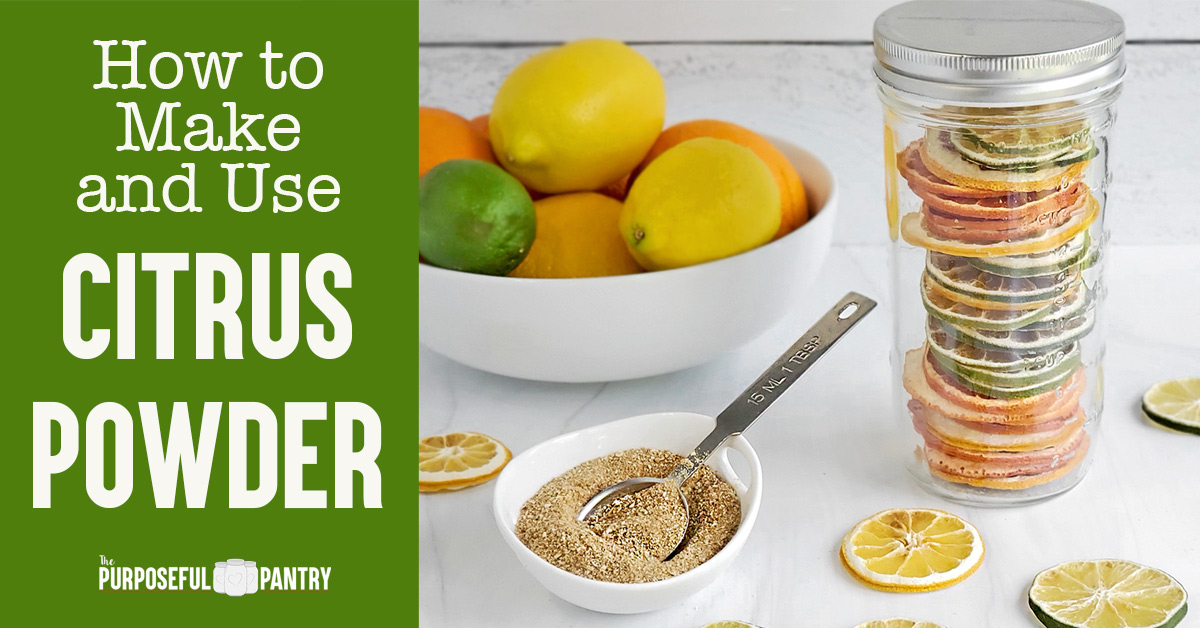
How to Make Orange Powder
Dry fruit thoroughly with the instructions above. It’s essential that your orange slices be completely dry before powdering.
- Break slices up into the grinder of your choice. I often use a NutriNinja bullet blender, but a coffee grinder or large blender works well, too.
- Pulse your grinder four or five times before commencing a sustained grind. Be sure to read the manual of your grinder to ensure proper use and not burn the motor.
- Strain the powder with a fine-mesh strainer, then grind the leftover bits again.
- Condition: Place powder on parchment paper on a cookie sheet in a warmed (but off) oven OR back into your dehydrator in coffee filters, muffin papers, etc. to dry for 15-30 minutes.
- Allow to come to room temperature, then store in an airtight container, preferably with a moisture absorber. Follow these tips to help prevent clumping in orange powder.
LEARN MORE: 25+ Ways to Use Fruit Powder
Retaining Vitamin C
Because Vitamins A & C are both heat sensitive, so dehydrating at higher temperatures can reduce their amount.
In order to keep all the vitamin C possible, dry your oranges (and any citrus) at less than 115F/46C.
More Uses for Dried Oranges
Commonly asked questions
Typically, most dehydrated foods are best within a twelve to eighteen month window that you dry them, according to the National Center for Home Food Preservation. However, with proper airtight storage techniques, you’re likely to get much longer time from them.
While orange peels are edible, you need to weigh the organic vs. conventional citrus debate about clean fruit.
Orange juice is made from the juice and pulp of oranges. You can flavor water with the essence of orange with dehydrated slices, but it’s not the same as orange juice.
Time is relative when dehydrating. It depends on your machine, your home’s humidity, the moisture in your fruit, how thick you’ve cut the slices, etc. Use the time mentioned as a window of time, not an exact. Keep drying if they aren’t fully dried, yet!
And if you want to see how to make and store orange powder – watch now!


Dehydrate Oranges
Equipment
Ingredients
- Oranges Works with mandarin, cara cara, cuties, navel, blood, etc.
Instructions
- Wash ranges well
- Slice into 1/4 slices
- Dry at 125F°C / 52°C for 18-36 hours
- Dry when they snap when cooled and no moisture is evident
- Condition
- Store in an airtight container
Video
Darcy’s Tips
-
- Roast chicken: Place slices in the cavity or make a bed for the chicken to sit on.
-
- Place slices on fish to bake.
-
- Slip into a glass of water or tea to bring a bright citrus flavor.
-
- Dip in chocolate to eat as treats or share as gifts
-
- As a garnish on cocktails
-
- Decorating (Remember to spray with a protective coating if displaying citrus on a wreath or other decoration for any period of time to seal it)
-
- Potpourri
-
- Use your favorite citrus zester to remove the zest (minus the white pith), lay between two paper towels, and allow to air dry for a day or so.
-
- You can also place them in a coffee filter or onto dehydrator trays on your dehydrating trays and dry at 95°F/35°C until dry.
-
- Peel citrus like an apple, and place the zest slices onto dehydrator trays to dry at 95°F/35°C until crisp (approximately 8 hours).
Nutrition
Nutritional information is an estimation only. Nutrient information for dehydrated foods is based on fresh. Use 1/4 of the servicing size for the same nutrient information. Thus 1 Cup of fresh fruit has the same sugars as 1/4 dried.
©ThePurposefulPantry. Photographs and content are copyright protected. Sharing of this recipe’s link is both encouraged and appreciated. Copying and/or pasting full recipes to any social media is strictly prohibited.


